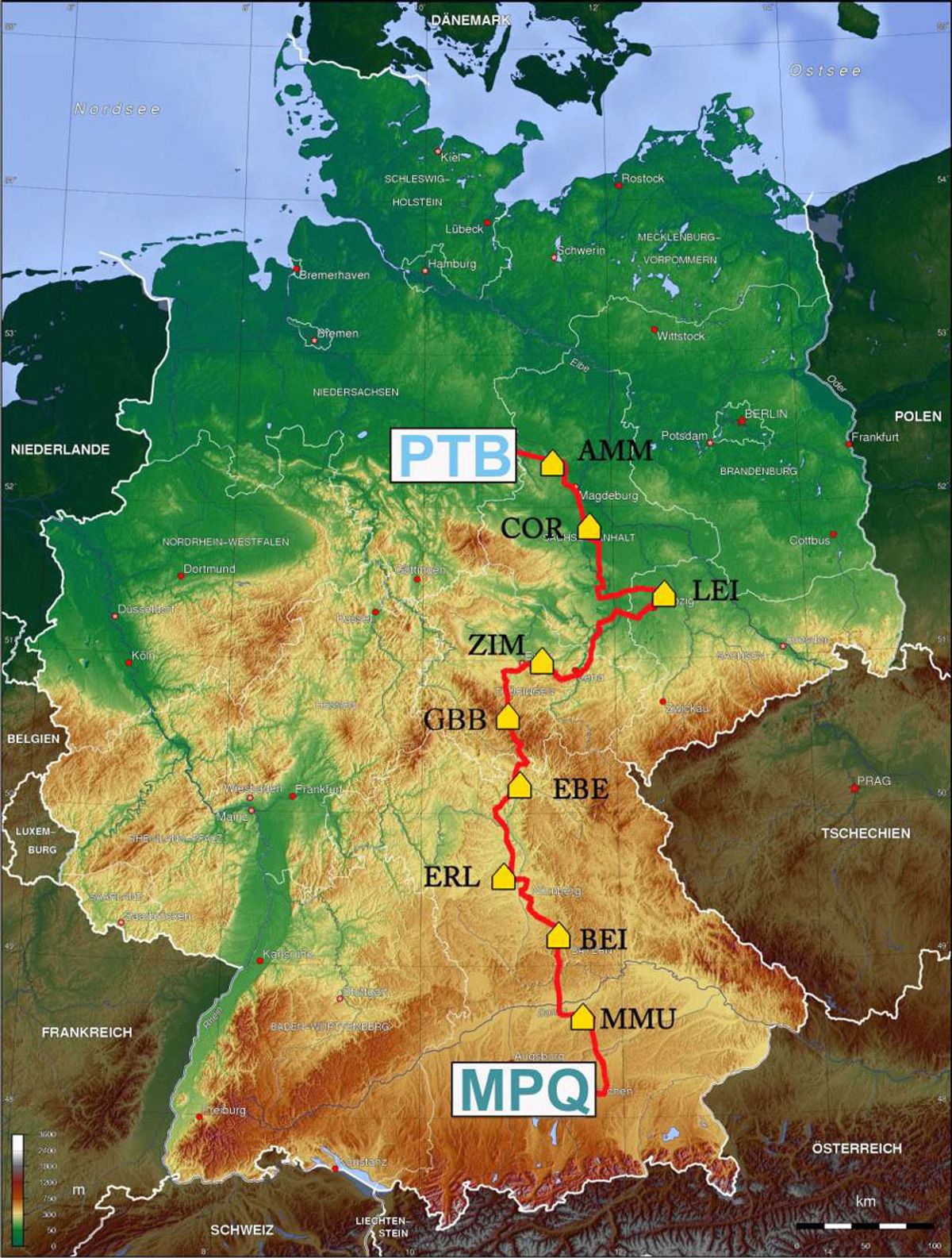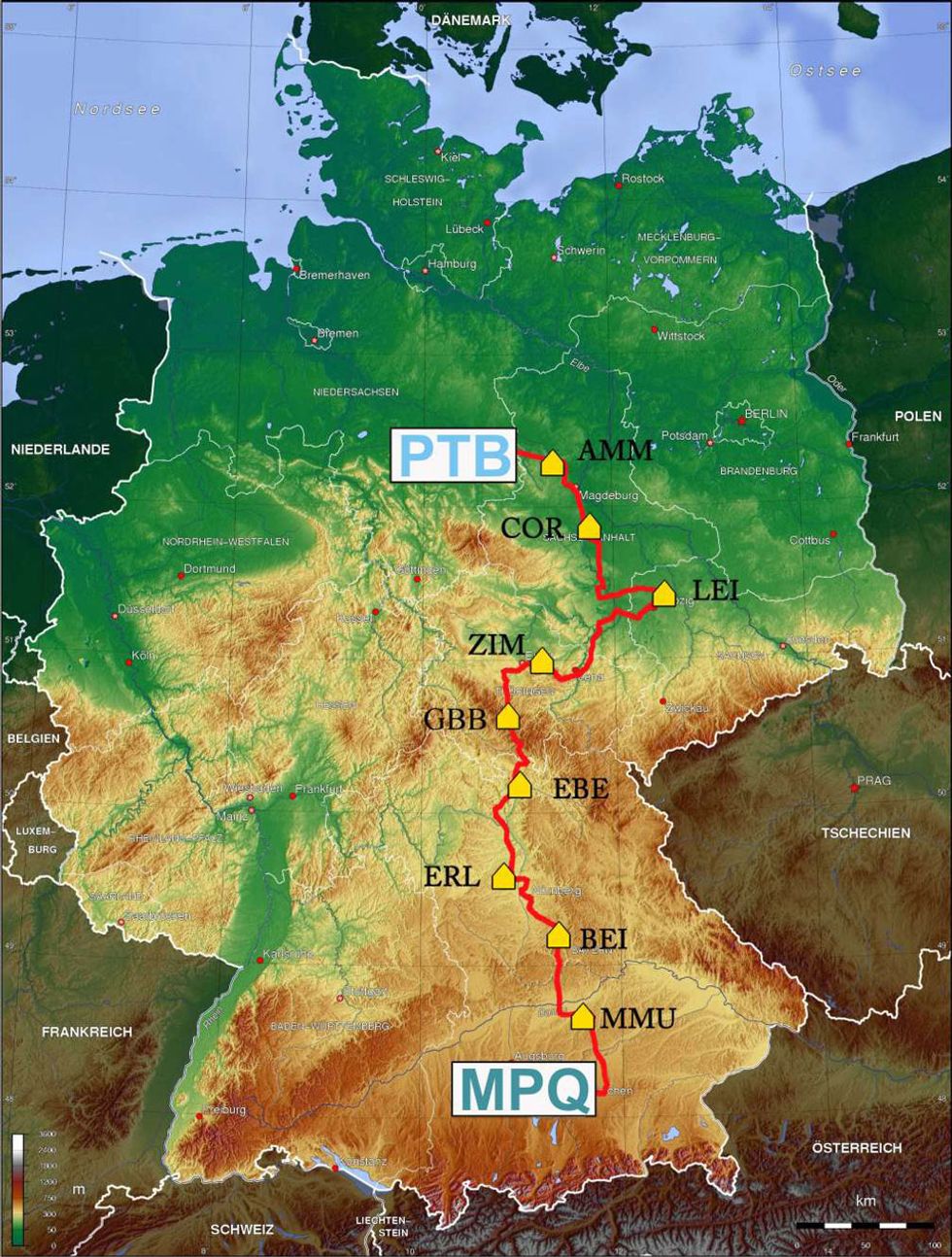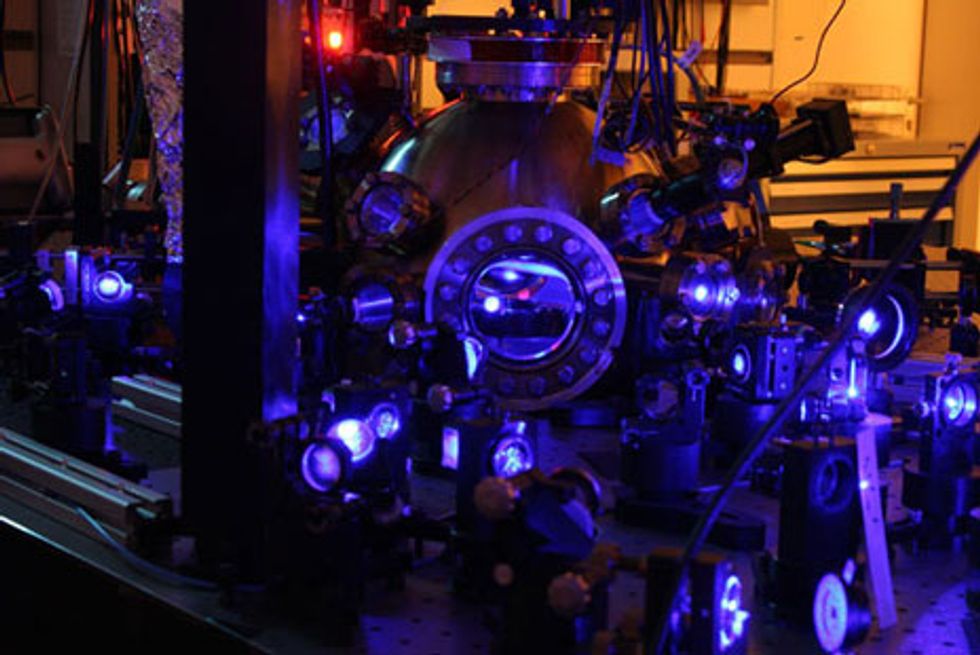30 April 2012—Scientists have taken a major step toward creating a worldwide network of the most accurate atomic clocks. In results published last week in Science, Katharina Predehl and her team in Germany demonstrated that it’s possible to connect two so-called optical atomic clocks over a distance of 600 kilometers using 920 kilometers of optical fiber.
An atomic clock is useful on its own, because it keeps an ultraprecise rhythm. But for GPS, cellular networks, and other important technologies, it needs to be synced with other, distant atomic clocks. The most common type of timekeeper, the microwave atomic clock, is checked against other microwave clocks using satellite links. But for newer, more precise optical atomic clocks, a satellite link is too noisy.
The oscillating tick of an optical atomic clock is in the form of a laser, which shines through a vapor of atoms. The laser’s frequency is matched to the transition rate between energy states in the atoms, and the laser is locked and held stable using a feedback loop. The atoms transition trillions of times per second in some clocks making for amazingly accurate timekeeping.
But that accuracy is hard to translate across great distances. Predehl and two teams of researchers—one at the Max Planck Institute of Quantum Optics, in Garching, and one at the Physikalisch-Technische Bundesanstalt, in Braunschweig—took an essential step in building a link good enough for optical clocks, though their methods aren’t groundbreaking.
“Conceptually, it is relatively simple. Practically, it’s really not,” says Bruce Warrington, a metrologist at Australia’s National Measurement Institute who published a companion article in Science this week on the history and future of connecting atomic clocks. “The amount of work required is impressive,” he says.
Earlier experiments have shown that optical clocks can be synced by optical-fiber connections, but this has been accomplished only within the same laboratory, or at most within 120 km—basically at a citywide level.
The experiment in Germany put the theory to the test on a larger scale. The challenge is compensating for frequency shifts in the system, Predehl explains. If the fiber cable changes beyond the scale of an atom—expanding or contracting from, say, a difference in temperature—the frequency will change during transit.
But Predehl’s team succeeded in sending a 194-terahertz frequency (infrared light with a wavelength of about 1540 nanometers) through 920 km of optical fiber. It’s about 600 km from Garching to Braunschweig, but the cables followed a gas line and went through a few detours along the way.
In the experiment, laser beams, one originating in Braunschweig and one in Garching, ran through two optical fibers, through amplifiers, past the Autobahn, to the partner institute. A portion of the light was sent back on the same line. That part was compared with the original laser’s frequency, which gave a measure of any minuscule changes in the length of the fiber that would prevent two clocks from being synced accurately. To compensate for any changes, the teams adjusted the lasers’ frequencies with an acousto-optic modulator, or AOM.
The AOM shifted the frequency so that the laser beam would emerge at the far end as if it had never taken a trip down a long optical fiber. For example, if the fiber shrank by 1 meter, then the AOM would need to negate that shift. It would adjust the original signal to what it would be if it had run through a fiber that was expanding by 1 meter per second, canceling out the shrinkage. This is a well-established method, but it hadn’t been applied over such a long distance or to such a high degree of precision.
The system kept the laser frequency shift to no more than 100 microhertz. Because the shift was so small, Predehl’s team could create a link stable enough for optical clocks at a distance. The researchers didn’t actually connect two optical clocks (Max Planck doesn’t have one), but that next move is more of a step than a leap.
“Sending a frequency and sending a time are not the same thing,” Warrington says, but they’re very similar. The key technologies demonstrated are exactly what you would need for an actual clock connection, he says. “They’ve overcome all the hard problems.”
John Kitching, leader of the atomic devices group at the U.S. National Institute of Standards and Technology, agrees. “It’s fantastic work,” he says, adding that it should work just as well with an optical clock. “It’s pretty convincing to me.”
Research groups in Australia, Asia, Europe, and the United States are also conducting experiments in links for optical atomic clocks. The great thing about the German work is that it will give other scientists confidence, according to Warrington. National networks of optical clocks will grow, he says, and then be connected internationally. Eventually they will exist on a worldwide scale.
What would it mean to have a worldwide network of optical clocks? Scientists don’t know yet.
“We know some scientific applications for them, but we expect some technical applications for them,” Warrington says. “But predicting these is like predicting GPS back in the 1950s, when the atomic clock was first invented.”


